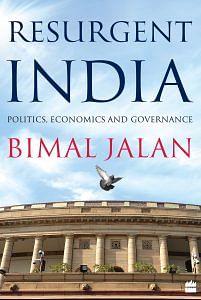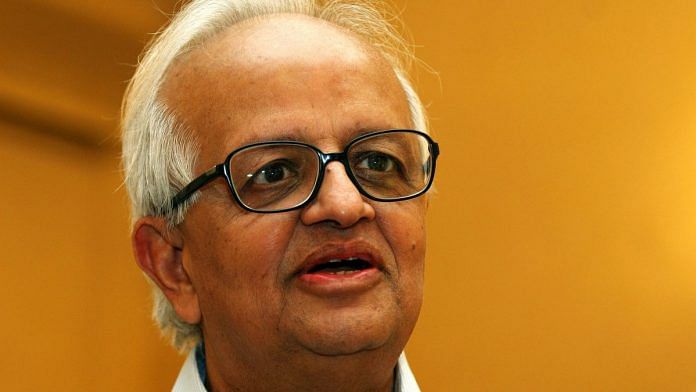The agenda for the future is long. Fortunately, there has been widespread interest and debate among experts and market participants on the various aspects of financial reform that enabled India to chart out a path best suited for it. A few areas that deserve attention and priority in the future are mentioned below.
First and foremost, it is necessary to continue with the process of strengthening India’s prudent provisioning and capitalization norms and bring them in line with the best international standards. It is equally important to continue with efforts to introduce maximum transparency, disclosure and accountability, so that investors and counterparties to financial transactions can make their decisions based on full and complete information and their own assessment of market (and other) risks. Given the new international focus, and externalities and linkages involved, the regulation of the financial sector is no longer a matter of choice or a matter of domestic concern alone. Over a period, it is likely that the willingness of the rest of the world to conduct financial business—by way of trade credits, direct investments or other types of investments and loans—will depend on their confidence in India’s financial practices. India must, therefore, remain ahead of the curve in its prudential management.
As highlighted in the previous chapter, the level of non-performing assets (NPAs) in the Indian banking system in the past few years has been too high. The problem has been further complicated by the fact that there are some banks that are fundamentally weak and their potential to return to profitability without substantial restructuring is low. Setting aside the problem of weak banks, in profitable banks too, the NPA levels have been found to be relatively high. In future, in addition to measures initiated by the RBI and the government to reduce NPAs, vigorous effort has to be made by these banks to strengthen their internal control and risk management systems, and to set up early warning signals for timely detection and action. The resolution of the NPA problem also requires greater accountability on the part of corporates, more disclosures in cases of defaults and an efficient credit information system. With the help of stricter accounting and prudential standards, along with recent initiatives taken by government and the RBI, the problem of NPAs in the future can be effectively contained.
Also read: Financial sector needs bold reform to fix slowdown. Modi govt has time & numbers to do it
Over the years, the progressive liberalization of financial markets and institutional reforms has led to growing interlinkages among the various segments of financial markets. The emergence of various types of financial intermediaries in addition to banks and financial institutions is healthy and desirable. A diversified structure contributes to greater stability of the financial system in the event of unanticipated problems. Part of the reason why problems in Japan’s financial sector persisted for so long over the previous two decades is believed to be due to virtually ‘bank only’ financial intermediation.
In India, while there has been progress in developing various segments of markets, including money and debt markets, the depth of these markets remains low, and the volumes as well number of participants is not very large. An important priority for the future is to develop the depth and breadth of these markets and to allow a multiplicity of intermediation possibilities with a wider range of risk and leverage profiles. The RBI should continue to work with financial experts and market participants to develop an appropriate procedural and policy framework to move in this direction.
An important area where action has to be taken as early as feasible is to expand the access to financial services in rural areas. As highlighted in the Rural Financial Inclusion Survey released by the National Bank for Agriculture and Rural Development (NABARD) in 2016-17, while 88 per cent of rural households reported having bank accounts, only half of them had some savings under the Jan Dhan Yojana programme. Nearly 47 per cent of households had outstanding debt. The NABARD survey also further highlights that even though the Central government had launched the important agricultural insurance scheme with high subsidies, less than 7 per cent of households actually had crop insurance. Overall, it is of utmost importance that a high priority is given to not only launching new rural subsidy schemes but also ensuring its actual delivery to agricultural households in rural areas.
India also should devise measures to make the interest rate structure more flexible in order to take account of changes in economic cycles and the inflation outlook. There are several policy constraints that limit the flexibility of interest rates in the banking sector and the rest of the financial sector. Given the fact that some of these constraints are deeply embedded in historical practices, consumer preferences and public-sector requirements, it may take some time to introduce basic reforms in the functioning of the banking system.
The change in the development paradigm from a largely state-directed strategy to a market-oriented one, and the unsatisfactory results of the earlier strategy, highlight the role of the financial system in the efficient mobilization and allocation of a society’s savings. There is no doubt that financial reform and further liberalization of markets is necessary and desirable to derive the maximum advantage from the comparative advantage of nations, the international movement of capital and the momentous changes that are taking place in technology in the twenty-first century. Financial reforms and the liberalization of markets are, of course, only means to an end, not ends in themselves. The ultimate objective of a successful development strategy remains what it has always been: a sustained and rising income for all the people, and the eradication of poverty, deprivation and illiteracy within a reasonable period.
Alongside financial reform and the development of markets, the country’s attention must also turn to the fiscal empowerment of the state and improvement in public administration. More than seventy years after Independence, India’s public offices (including public sector institutions) still leave a lot to be desired in terms of delivery of services or in the efficient discharge of essential functions. A thorough review of the institutional framework, rules, regulations and accountability of the administrative organs of the state is essential in the twenty-first century. The focus should be on what they (the governing bodies) do for the people, not what they do for themselves. With a revitalized fiscal situation and further progress in establishing a forward-looking, strong and stable financial system in India, the twenty-first century can truly be a century of fast and equitable development.
Also read: RBI has done its bit to boost India’s economic growth, now the govt needs to do its share
 This excerpt from Resurgent India: Politics, Economics and Governance by Bimal Jalan has been published with permission from HarperCollins India.
This excerpt from Resurgent India: Politics, Economics and Governance by Bimal Jalan has been published with permission from HarperCollins India.




इनको चाहिए ये किसी बेरोजगार से शादी करें जिसके पास टाइम तो होगा इनके लिए।
They never want to marry a man who is below ranks.
Somebody should tell Pappu and Modi critics to stop complaining about the autonomy is being diluted.